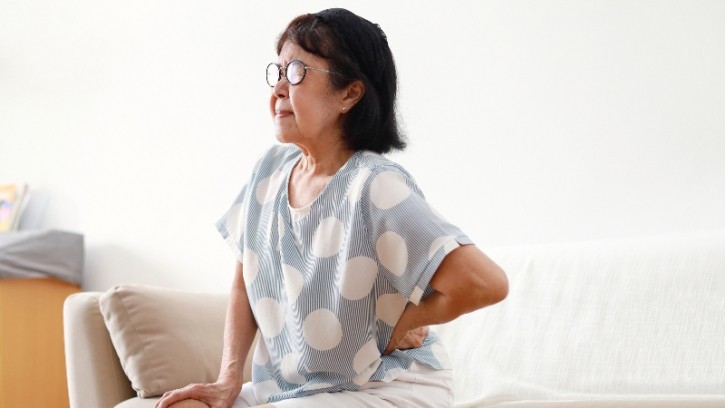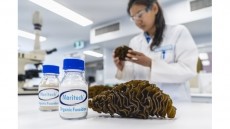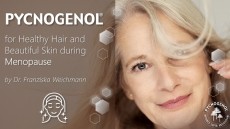Multispecies probiotics may have preventive effect on postmenopausal osteoporosis and fractures – Thai RCT

Due to oestrogen deficiency and ageing, postmenopausal women are at risk of progressive bone loss, defective bone metabolic functions, and bone conditions such as osteoporosis.
Furthermore, oestrogen deficiency alters the equilibrium of gut microbiota and could increase risks of obesity, insulin resistance, type 2 diabetes, fatty liver disease, cardiovascular diseases, and inflammatory bowel disease.
In previous studies, probiotics’ various mechanisms of action that bring benefits to human health, including bone, have been proposed.
To evaluate the effects of multispecies probiotics on standard serum bone turnover markers, namely bone resorption marker C-terminal telopeptide of type 1 collagen (CTX) and bone formation marker N-terminal propeptide of type 1 procollagen (P1NP), a double-blinded, randomised, placebo-controlled trial was conducted in Thailand between March 1 and September 30 last year.
The study included 40 postmenopausal women with osteopenia aged between 45 and 70 years, who were randomly assigned to two groups.
Participants in the intervention group were given multispecies probiotics sachets provided by pharmaceutical firm CMED Product 1994 Company Ltd.
Specifically, each sachet contained Lactobacillus reuteri GL-104 1.5bn CFU, Lactobacillus paracasei MP-137 0.6bn CFU, Lactobacillus rhamnosus MP108 0.6bn CFU, Lactobacillus rhamnosus F-1 0.3bn CFU, Lactobacillus rhamnosus BV77 0.6bn CFU, Bifidobacterium animalis ssp. lactis CP-9 2.4bn CFU, Bifidobacterium longum ssp. longum OLP-01 1bn CFU, Bacillus coagulans 1bn CFU, and 270mg of prebiotics (inulin).
Participants in the placebo group received identical-looking sachets that contained only 270mg of inulin.
Both groups were asked to take one sachet per day orally before any meal for 12 weeks. They were also given at least 1,200mg of calcium daily and 20,000 IU of vitamin D2 supplementation per week.
It was found that the intervention group showed a significant decrease in serum CTX at 12 weeks compared to baseline (p-value 0.026), while no significant change in serum CTX was demonstrated in the placebo group (p-value 0.18).
As for serum P1NP, there were no significant changes at 12 weeks compared to baseline in both the intervention group (p-value 0.64) and placebo group (p-value 0.86).
“Our study has demonstrated that multispecies probiotic supplementation for 12 weeks in osteopenic postmenopausal women may impede the increase in serum bone resorption marker CTX by downregulating osteoclast-induced bone resorption,” the authors wrote.
Double whammy
A rapid loss of bone mass and strength occurs within three years after the last menstrual period, making the menopausal transition a critical time for bone health.
In particular, the decline in oestrogen during menopause can cause an increase in bone resorption markers.
Moreover, the ageing process causes various bone changes that affect their structure and metabolism, increasing the risk of osteoporosis and fractures. It can also affect bone cells, leading to an increased rate of osteoclast and osteoblast apoptosis, which impacts bone resorption and formation.
“An example of age-related change in bone structure is the increase in periosteal diameter, which can weaken bones without a decrease in total bone mass.
“Elderly individuals may also experience more difficulty in absorbing calcium, leading to calcium deficiency and secondary hyperparathyroidism. These contribute to bone resorption and decreased bone mass.”
Need for alternative treatment
Although there are existing postmenopausal osteoporosis treatments to minimise fracture risk, the incidence of fractures is most notable in women who have not developed osteoporosis.
Currently, management of osteopenia in postmenopausal women includes calcium and vitamin D supplementation, as well as non-pharmacological strategies such as a balanced diet and weight-bearing exercise.
Although some antiresorptive medications, including hormonal therapies, are recommended for preventive use in those with high risk of fractures, their adverse effects often impact adherence and treatment success rates.
This underpins the need for alternative therapies that are safe, inexpensive and effective to avert postmenopausal bone loss leading to fractures.
“Our study showed that combining multispecies probiotic supplementation with adequate calcium and vitamin D can effectively exert an antiresorptive effect on the bone of osteopenic postmenopausal women.
“This alternative also seems safe as there was no significant adverse effect. Though some participants in both groups experienced bowel disturbances at the start of the trial, the symptoms were mild and self-limiting.”
Evidence has shown that the long-term use of probiotics helps restore a healthy gut microbiome, which positively impacts bone health through maintaining intestinal barrier integrity and preventing inflammation-causing toxins from entering systemic circulation.
“The benefits of probiotics depend on specific strains, strain-mineral affinity, dosage and duration of administration, and individual differences among hosts.
“Examples of absorption enhancement mechanisms include regulation of tight junctions between gut epithelial cells, alterations of the gut’s pH, increased expression of proteins essential for cellular transport, and production of short-chain fatty acids such as acetate and propionate that have anti-inflammatory properties.”
Through increased availability of minerals and nutrients, probiotics may improve bone mineral density and lower fracture risks.
“Future studies with a larger sample of patients and a longer duration of follow-up may enhance our findings, allowing for the possibility of probiotics to be recommended as an alternative or add-on modality for the management of postmenopausal osteoporosis,” the researches concluded.
Source: Nutrients
https://doi.org/10.3390/nu16030461
“Effects of Multispecies Probiotic Supplementation on Serum Bone Turnover Markers in Postmenopausal Women with Osteopenia: A Randomized, Double-Blind, Placebo-Controlled Trial”
Authors: Marut Vanitchanont, Sakda Arj-Ong Vallibhakara, Areepan Sophonsritsuk, and Orawin Vallibhakara











